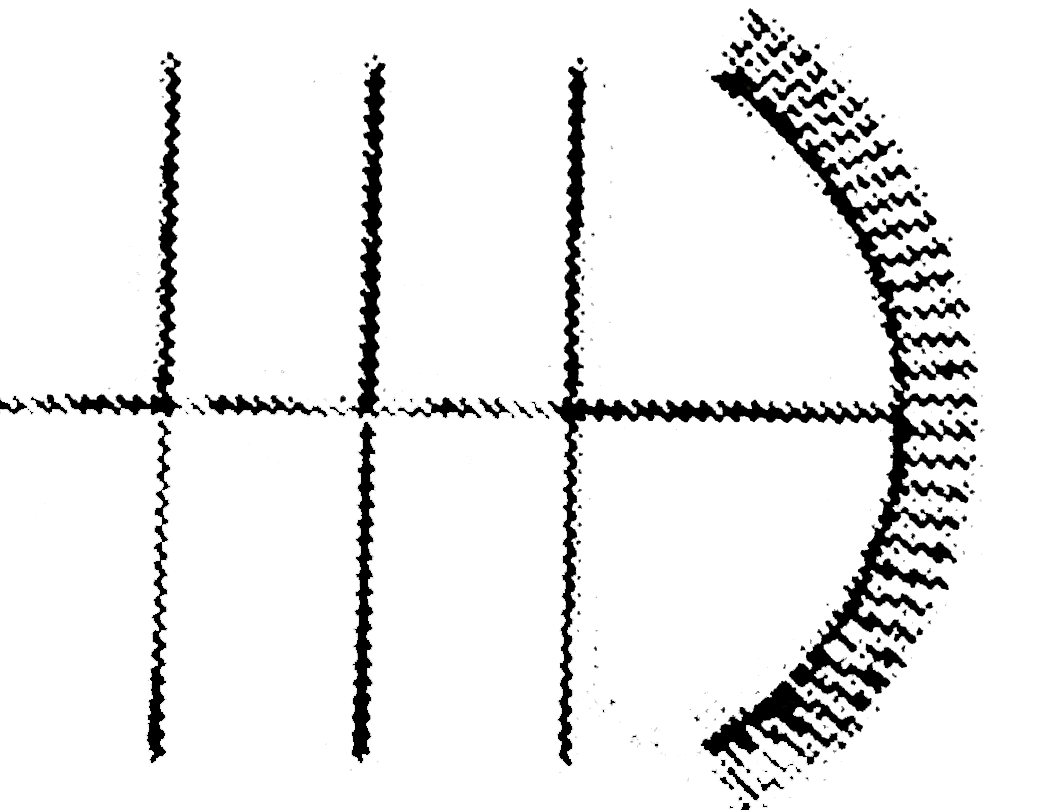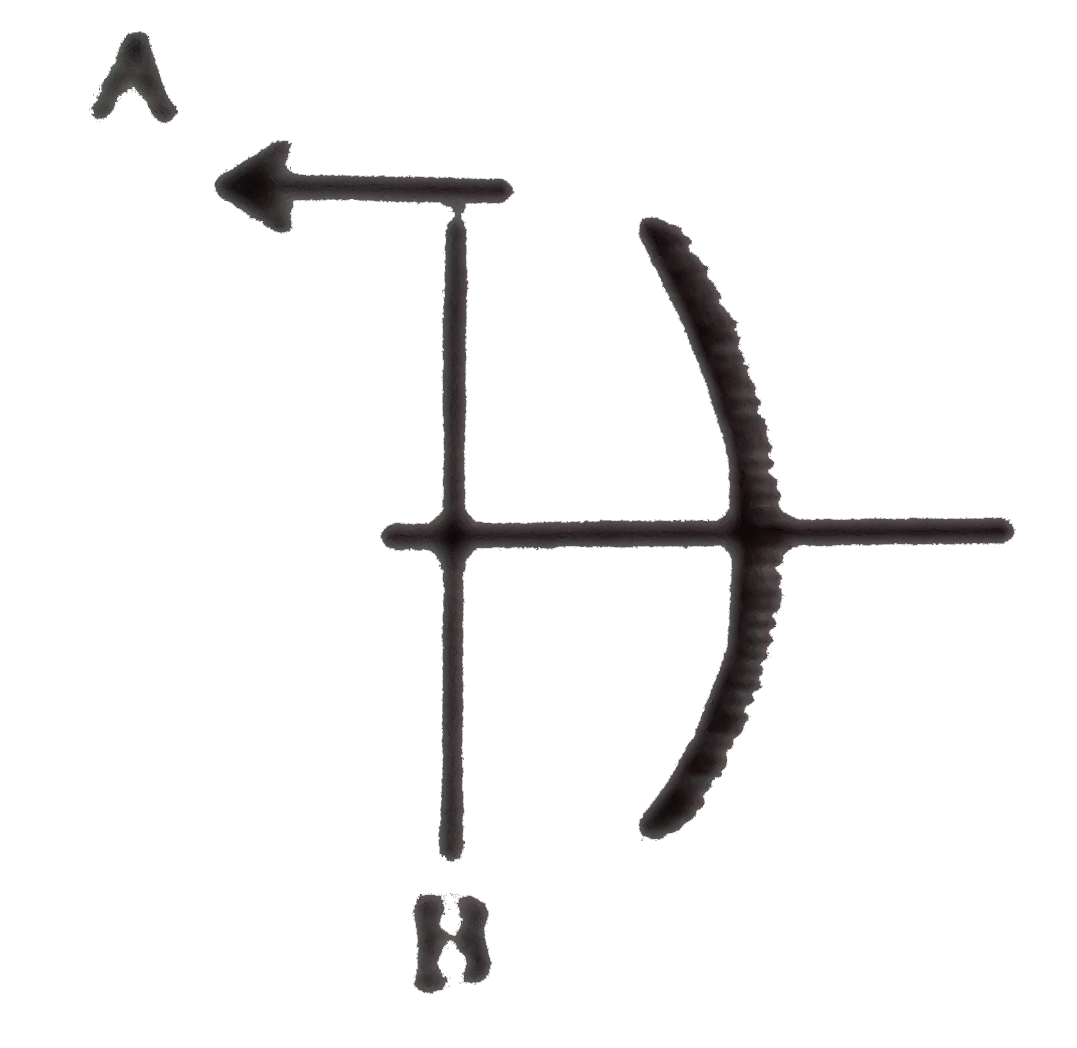A plane wavefront is incident normally on a convex lens. Sketch the reflected wavefront emerging from the lens.
To solve the problem of sketching the refracted wavefront emerging from a convex lens when a plane wavefront is incident normally, we can follow these steps:
1. Understand the Setup:
- We have a convex lens and a plane wavefront incident normally on it. The plane wavefront consists of parallel rays of light coming from a distant source.
2. Draw the Convex Lens:
- Sketch a convex lens. The lens should be symmetrical, with a principal axis drawn horizontally through its center.
3. Indicate the Principal Axis:
- Mark the principal axis of the lens. This is a straight line that passes through the center of the lens and is perpendicular to the lens surfaces.
4. Draw the Incident Wavefront:
- Draw the incident plane wavefront as a series of parallel lines approaching the lens. Since the wavefront is plane and incident normally, these lines should be vertical and parallel to each other.
5. Identify the Focus:
- Mark the focal point (F) on the principal axis. This is the point where the rays of light will converge after passing through the lens.
6. Sketch the Refracted Wavefront:
- After passing through the lens, the wavefront will change shape. Draw a series of curved lines that converge towards the focal point. This represents the refracted wavefront emerging from the lens.
7. Label the Wavefronts:
- Label the initial plane wavefront and the emerging spherical wavefront. The emerging wavefront is a spherical converging wavefront.
Final Sketch:
- The final sketch should show:
- The convex lens in the center.
- The incident plane wavefront as straight parallel lines approaching the lens.
- The refracted wavefront as curved lines converging towards the focal point.
Summary:
- The incident wavefront is plane, and after refraction through the convex lens, it becomes a spherical converging wavefront.
---
- We have a convex lens and a plane wavefront incident normally on it. The plane wavefront consists of parallel rays of light coming from a distant source.
- Sketch a convex lens. The lens should be symmetrical, with a principal axis drawn horizontally through its center.
- Mark the principal axis of the lens. This is a straight line that passes through the center of the lens and is perpendicular to the lens surfaces.
- Draw the incident plane wavefront as a series of parallel lines approaching the lens. Since the wavefront is plane and incident normally, these lines should be vertical and parallel to each other.
- Mark the focal point (F) on the principal axis. This is the point where the rays of light will converge after passing through the lens.
- After passing through the lens, the wavefront will change shape. Draw a series of curved lines that converge towards the focal point. This represents the refracted wavefront emerging from the lens.
- Label the initial plane wavefront and the emerging spherical wavefront. The emerging wavefront is a spherical converging wavefront.
- The final sketch should show:
- The convex lens in the center.
- The incident plane wavefront as straight parallel lines approaching the lens.
- The refracted wavefront as curved lines converging towards the focal point.
- The incident wavefront is plane, and after refraction through the convex lens, it becomes a spherical converging wavefront.
Topper's Solved these Questions
- OPTICSBook:PRADEEPChapter:OPTICSExercise:Very short answer question
Explore 5 Videos
- OPTICSBook:PRADEEPChapter:OPTICSExercise:very short answer questions
Explore 1 Video
- MAGNETIC EFFECT OF CURRENT AND MAGNETISMBook:PRADEEPChapter:MAGNETIC EFFECT OF CURRENT AND MAGNETISMExercise:Competition Focus (Multiple Choice Questions)
Explore 2 Videos
Similar Questions
Knowledge Check
When a plane wavefront is incident on a double convex lens, the refracted wavefront is
Aa plane wavefrontBa cylinderical wavefronCa spherical wavefront which is diverging.Da spherical wavefront wavefront which is converging.A plane wavefront AB is incident on a concave mirror as shown. Then,the reflected wavefront will be
 A
A B
B C
C DNone of these
DNone of theseA plane wave front falls on a convex lens. The emergent wave front is
APlaneBCylindericalCSpherical divergingDSpherical converging
Concave lens and convex lens
View SolutionConcave lens and Convex lens
View SolutionPlane wavefronts are incident on a spherical mirror as shown, the reflected wavefronts will be

View SolutionPlane wavefront can be obtained form
View SolutionA plane wavefront AB Is incident on a concave mirror as shown .Then,the wave front just after reflection is -

View Solution